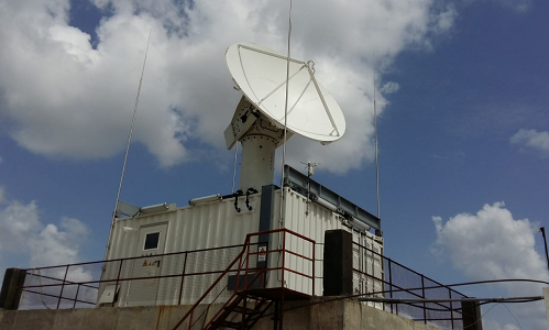Indian weather scientists are carrying out an extensive study of the cloud systems to develop a model for artificial rains in deficient regions. The three-year-long study is currently underway in Solapur of Maharashtra over the rain shadow region by scientists at the Indian Institute of Tropical Meteorology (IITM), Pune.
Pune (ISJ) – Indian weather scientists are carrying out an extensive study of the cloud systems to develop a model for artificial rains in deficient regions. The study is currently underway in Solapur of Maharashtra over the rain shadow region by scientists at the Indian Institute of Tropical Meteorology (IITM), Pune.
The three-year study, which began in 2017, gathered background observations initially and is aimed at improving the understanding of clouds and rainfall patterns. The analysis of the observations would be carried out once the experiment concludes in the monsoon of 2019, said Dr Tara Prabhakaran, senior scientist at IITM and Project Director of Cloud Aerosol Interaction and Precipitation Enhancement Experiment (CAIPEEX).
“The IITM experiment series aims at acquiring detailed observations of atmospheric states, particulates, clouds and rainfall,” Dr Prabhakaran told Indian Science Journal. She said, a dedicated C-band radar has been installed in Solapur to monitor clouds and precipitation and to suitably select clouds for seeding and evaluate the effect of seeding.
IITM started cloud seeding experiments in the 70’s and the experiment at that time was inconclusive due to various reasons. The current study is being carried out with the help of aircraft and radar and a rain gauge network to observe clouds and cloud processes.
Monsoon in India is not spread out equally in different regions. There is significant spatial and temporal variability. A small shift in rainfall has a significant impact on agriculture and other water resource needs. Envisioning the need for rain enhancement demand by state governments, IITM has been involved in studying the artificial rain and the processes.
“We make observations before and after seeding, both with radar and in situ aircraft observations. We combine these with numerical simulations and draw further understanding over the region. Ideally, we need to make observations in targeted areas, where there is possibility for rain enhancement. Geographically, such areas to be identified and further research are needed as well,” explained Dr Prabhakaran.

Ground site laboratory set up by IITM at Solapur Singhat Engineering College
Though the scientific community is divided on the efficacy of artificial rains to bridge the gap in rainfall, Dr Tara Prabhakaran said, such studies in catchment areas of other countries have proven to be effective and economical. She said the observations from these studies are gathered to develop parameters of physical processes in the numerical models as well, which will be used in global models to predict weather and climate.
Currently IITM’s experiments are being carried out using a hired aircraft. However, the Earth Science Ministry is in the process of procuring an aircraft to develop a national facility for airborne measurement and research for clouds, aerosols and trace gases, etc.


